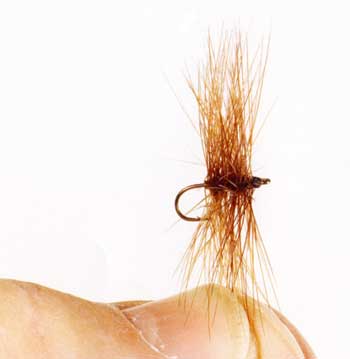One of the first times I went fly fishing with Gary Borger, we went with our wives. Gary taught my late wife Elizabeth and I to fly fish a couple of years earlier and our families had become friends. We were on the Wolf River, one of 2 scenic and wild rivers in Wisconsin. We had rigged up and Gary's fly was dangling in the water below him. He was holding the rod between his knees as he was busy with something else.
All of a sudden he jerked his knees to the side and had hooked a trout that had taken his dangling fly. Gary's wife Nancy, my wife Elizabeth and I broke out in laughter. Even when when his fly is dragging, the trout prefered Gary's presentation!
These are the exceptions that happen to all of us which proves the rule. I have caught trout on a dangling fly as have many of us. What it proves is that trout populations have diverse behaviors when they are feeding opportunistically. What it does NOT prove is that most of the trout are susceptible to that presentation.
I have told this example before, but here it is again. On another BB, a member said he was fishing one of the famous spring creeks in Pennsylvania. There were a group of fly fishers fishing a hatch and he asked what the hatch was. He did not have that fly so he put on a Royal Wulff and caught 3 fish. His conclusion was that the fly fishers were wrong and the fish were not feeding selectively.
I pointed out that the only thing he could say was that the fish that took his Royal Wulff were not feeding selectively. He could not make any conclusions about the fish that did not take his fly, nor could he even say most of the fish were were feeding non selectively.
Whenever we do catch a fish, of course the fish was susceptible to the method we were using. However, our goal is not just to catch the occasional fish by using a method that will work on a small proportion of the fish. It is to figure out the method that will work on the greatest proportion of the fish, because that method will result in the greatest chance for success.
The difference between the very good fly fisher and the average fly fisher is not just their ability to read water, or thier casting ability, or a whole host of other assets at their disposal. It is also the ability to figure out the fly and the presentation that will result in the greatest chance for success.
I appreciate the truth that the article reveals but let us not forget that these are exceptions unless the dragging fly imitates the behavior of a hatch of insects like the capering and skittering caddis flies mating on the water surface or skittering caddis drying their wings and taking off. So a skating or dragging fly is a specific technique that has a time and place when it imitates the insect that the majority of fish are taking.
“Then we have a capering sedge hatch which 99 % of most lakes don’t have. That is an insect that looks like a tent-winged caddis and it’s those that bring the fish to the surface because they actually run and mate on the water. It’s just an explosive top water action when they hit those bugs, so it’s one of those huge draws that makes people really like to come.”
History of Monster Lake Ranch | Monster Lake Ranch
"Hatching caddis often scuttle across the surface of he water drying their wings trying to get airborne. It is this that is imitated with the jerk and pause retrieves. Imagine the speed of the sedge on the water, that is what you must imitate."
Understanding The Caddis / Sedge Life-Cycle For Fly Fishing
Don't let a
hasty generalization or a
biased sample fool you into thinking that the exception should become the rule. The way to avoid this in the case of the dragging fly is to try to figure out if there is a logical explanation like a caddis hatch or other skittering insects that could explain this event. Then the event is not exceptional because it fits into the well documented behavior of trout during a caddis hatch.

